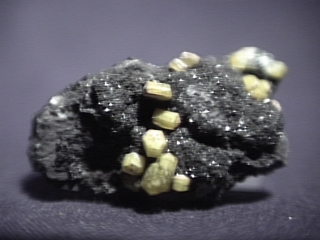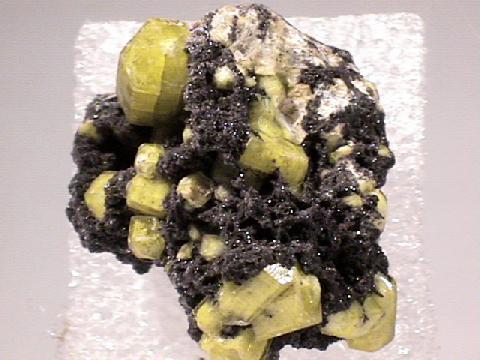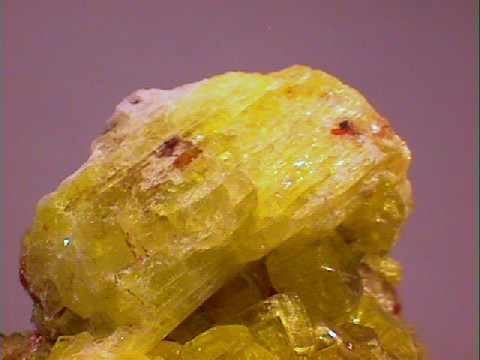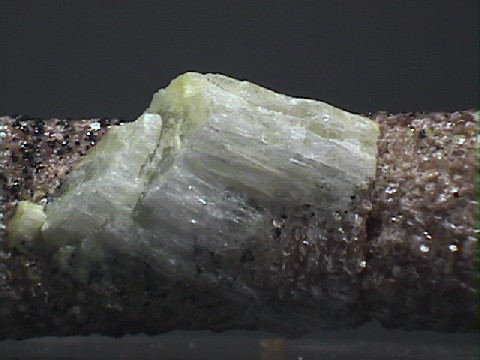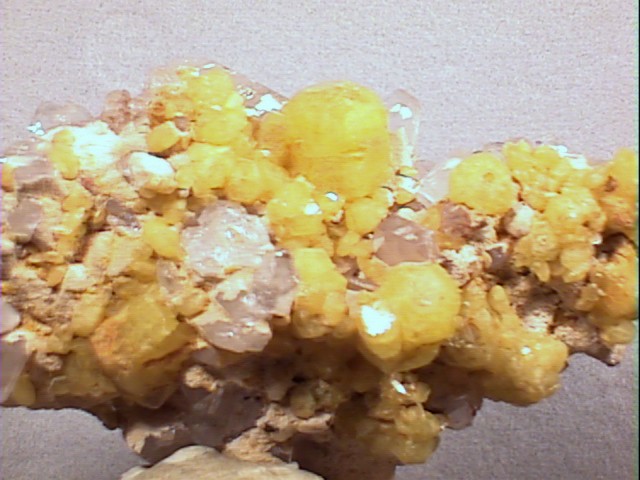 THE MINERAL ETTRINGITE
THE MINERAL ETTRINGITE
- Chemistry: Ca6Al2(SO4)3(OH)12 - 26H2O, Hydrated Calcium Aluminum Sulfate Hydroxide.
- Class: Sulfates
- Group: Ettringite
- Uses: Only as mineral specimens.
Specimens
Its chemistry is interesting. Four out of every five atoms in this mineral is either a part of a water molecule or an hydroxide. It's almost all water! This fact is reflected in its very low specific gravity of only 1.7, that's less than twice the specific gravity of water.
It is difficult under ordinary means to distinguish ettringite from its close cousin sturmanite. Both are members of the Ettringite Group and have similar crystal habit, density, luster and will often share the same bright yellow color.
PHYSICAL CHARACTERISTICS:
- Color is a bright yellow, also colorless and white.
- Luster is vitreous.
- Transparency: Crystals are transparent to translucent.
- Crystal System is trigonal; bar 3 2/m.
- Crystal Habits include hexagonal prisms terminated by an hexagonal pyramid or a pinacoid, more commonly by both. Terminations can be rounded or dome-like but many have nice flat faces. Flattened rhombohedrons, acicular and fibrous forms are also seen.
- Cleavage is poor and rarely seen.
- Fracture is uneven.
- Hardness is 2 - 2.5
- Specific Gravity is approximately 1.7+ (well below average)
- Streak is white.
- Other Characteristics: Crystals are usually rather small, typically less than 1/4 inch long.
- Associated Minerals are calcite,
afwillite , pillipsite and some other zeolites. - Notable Occurrences include several South African localities such as Hotazel and Kuruman District and Ettringen, Germany (hence the name).
- Best Field Indicators are crystal habit, density, hardness, lack of cleavage and color.

